Klenolovnik is not a fairly popular plant among the gardeners of Russia. It is rarely chosen for cultivation on the site due to the fact that the male is poorly tolerates harsh winters or does not tolerate them at all. Of course, you can grow species varieties of the klenolisnik, but they are not so decorative as varieties. In this article, we learn how else is called a male, what kind of varieties of this plant exist, how to plant and grow a malen kettle on the household plot.
Klenoltnik - Botanical Description
- Klenolnik also called Mukdenia. This name plant received from the Japanese botany in honor of the ancient capital of Manchuria - the city of Mukden. To be called the plant, the plant became due to the unusual similarity of the leaves with maple leaves.
- The klenoltik belongs to the camnery family.
- Motherland's male is considered to be Japan, China, Korea, other regions in East Asia. Currently, this herbaceous plant is distributed in countries with a tropical or subtropical climate.
- Klenoltnik is a herbaceous plant, the root system of which is represented by the rhizome compact form. The surface of the root slightly scaly, painted in brown.
- A characteristic feature of the structure of the klenolisnik is that the plant has no stem. Thick fleshy leaves take their origin right from the root.
- The leaves of the cheesecake carry the main decorative value for the plant. They grow on a long cutter, can reach up to 40 cm in width depending on the variety of klenolisnik. Sheet plates of this herbaceous perennial dissected at 5-9 stakes having a pointed or diamond shape.
- A characteristic feature of the Klenolisnik, who and "falls in love" in itself in many gardeners, is the feature of mucking to change the color of the leaves depending on the pores of the years. In the spring, the leaves are painted in an intense green, in the summer, the raspberry color is acquired, and in the fall become brightly crimson. Since the klenoltik forms dense leaf outlets, thick the ground carpet, throughout the growing season you will be watching truly an excellent spectacle.
- Flowering in Mukzenia begins very early. In some varieties, it can occur simultaneously with the dissolution of leaves or even up to this point. White or cream small flowers bloom on thin bluers reaching 50-60 cm in height. Umbrellas or buggy inflorescences give the plants an additional charm.
- The fruit of the male is a twin box, inside which you can detect a lot of small seeds.
Klenoltnik (Mukia) - Plant Varieties
The breeders did not agree in a single opinion in the species diversity of the klenolisnik. But often they talk about the following types of herbal plants:
- klenoltnik Rossi. This type of mukzeenium has a slightly larger leaves than other types, forms a dense and thick leaf outlet. With the beginning of flowering, the leaves acquire a crimp. The plant also produces very long flowercas - up to 60 cm in height, on which white or cream colors-stars are located in umbifidic inflorescences. Klenoltnik Rossi is often choosing for growing in the climatic conditions of Russia, as it has a higher degree of winter hardiness. This type of mukzeenia was named after Scottish John Rossi, who lived in Manchuria;
- klenoltnik Akantoliste. Some breeders tend to believe that the Mukhsa Akantiste is a subspecies of the Mukdenia Rossi. Indeed, this kind is not much different from Klenolisnik Rossi or Klenolisnik Karatsub. The winter hardiness of the plant is extremely low, which allows you to grow this herbaceous plant in regions with a temperate climate only as annual. Like the remaining varieties of mukzenia, this species changes its painting during the growing season. In the fall, the leaves become more dense, change the color from green to almost burgundy. The positive quality of this species is its unpretentiousness to the composition of the soil, the ability to grow even in the shady sections of the garden;
- karastnik Karasuba. The birthplace of this variety of Mukdenia is considered to be Korea. In Russia, this plant can be found quite rare, as it practically does not have winter-hardified characteristics. When the air temperature drops below 5 degrees of heat, the plant dies. A distinctive feature of this clarified (Mukdenia Karasuba) is an incredibly spectacular color of the leaves. The middle of the sheet plate can be green, and the edging - raspberry. Gradually, the whole sheet of muktini acquires a burgundy color, which looks very beautiful on the background of a fading garden in the fall.
Klenoltnik - landing and care
Choosing a place to land
Klenolistnik is a unique decorative plant that can transform the most unsightly shady portion of your garden. If you decide to plant this plant, then you will seriously attribute to the selection of landing sites for the male.
- Klenolistnik is a herbaceous plant, rarely exceeding 40 cm in height. It is for this reason for its landing that even open areas that are not protected from wind can be selected.
- Klenoltik prefers to grow in a half. Choose on your site a place under the openwork crown of high trees that will pass a sufficient amount of light, but also prevent the perennial under the destructive straight rays.
- The klenoltik can greatly grow even in a complete shadow, where most other cultures are hard to grow and develop.
- When choosing a place to land the klenolisnik, it is worth considering the proximity of other decorative cultures.
Choose the ground for landing
In order to create the ideal conditions in your garden for the male, it is advisable to consider it preferences to the soil composition:
- all varieties of the klenolisnik prefer to grow on the basis, which is enriched with an organica;
- klenoltik prefers to grow on well-drained soils;
- the prerequisite for the full growth and development of the klenolisnik is a sufficient level of soil moisture. If the plant will lack moisture, it will begin to quickly lose its decorative qualities and can die. Some gardeners in the preparation of the landing pit for the cheesecake are laid on the bottom of a small clay layer;
- for fulfilling growth and development of Mukdenia, it is better to put it on a nutritious letter or loam.
If you are worried about the insufficient nutritional level of the soil on your plot for the cheese, then simply more seriously approach the planning pit process. It is necessary to choose a place to land mukzeenia even because this plant cannot be disturbed by transfers over the next 5 years.
Technology landing
If you have already purchased the landing material of the Mukdenia, we chose a place to plant a plant, you can begin to prepare the landing pit and landing.
- First you need to dig up landing pit. Their sizes will depend on the size of the root of the klenolisnik.
- Nourishing soil for planting a cheese can be purchased in a store or simply mix garden ground with peat, leaves, humus.
- At the bottom of the landing pit, lay coarse-grained river sand, which will perform the function of the drainage layer. Some gardeners fill the bottom of the clay's landing pit in order to maintain a constant level of humidity.
- Klenovnik's rhizer before planting it is desirable to "get used" with water.
- Then put the rhizome in the fossa horizontally, trying not to send a point of growth to the north.
- Carefully float the rhizome, slightly compact the ground from above.
- Abundantly spin the male. Within a few days after landing, the plant can not be disturbed with irrigation, give him time for "acclimatization".
How to care for mukdenia
So, you planted the klenoltik in its plot, observing the technology of proper fit. It is now important to create a herbaceous decorative plant optimal for the growth and development of the condition. What is the care of the klenolistnik on the household plot? Consider several recommendations that will help to grow even a novice gardener:
- timely irrigation is one of the most important conditions for the full growth of the klenolisnik in the area. Earth should always be slightly wet, but also to allow overflow is also not worth it. Plants experiencing lack of water can dry very quickly. For watering the cheese, as for most other decorative plants in the garden, it is better to use steal water water or rainwater;
- spraying. In the cultivation of Mukzenia, you need to try to avoid the condition of drought by any ways. Light spraying plant will only welcome. It is especially useful to arrange a daily shower for the cheerfulness after the end of flowering;
- feeding. If you take care of the preparation of the soil at the time of the landing, they made it more nutritious in advance, then you can forget about any feeding for a while. Mukia is a plant that is distinguished by slow growth rates. It will gradually absorb nutritional elements from the soil. After 2-3 years, you can begin to make feeding, but not too often. One spring feeding with a comprehensive fertilizer with a predominance of nitrogen will be enough. The fertilizer should be breeding strictly according to the instructions, so as not to cause the "overdose" from the kennel, which can be very harmful;
- weeding. If you do not like to remove weary grass around your ornamental plants on the plot, then the male is the perfect selection of the plant for you. Sheet sockets grow up so tight and thickly that weeds simply do not have the place for growth. The fleshy sheet plates create a complete shadow under the plant, creating ideal conditions for worms and other insects, loose and improving the characteristics of the soil;
- preparation for winter and wintering. In some regions, for example, in the southern Urals, the klenolistnik can be overwhelmed in the open soil. It is enough just to hide the plant with a thick layer of mulch, and then snow. In other regions, the winter will not be able to survive the winter with a colder climate. You can grow a plant as an annual. If you want to keep the varietal klenolovnik for the next year, then by winter, transfer it to a basement or other suitable room. To do this, it is necessary to carefully dig a plant, trying to capture as much larger the ground around the roots in order not to destroy the earthen com. The process of annual digging of the klenolovnik for the winter can be simplified if planting a plant into open soil in a special container with drainage holes. In the fall, it will be necessary to simply dig a container, and in the spring to bury it with a plant back;
- lighting. The klenolnik is a decorative plant for shady or feverish gardens. If you have noticed that higher plants or other shelters stopped creating a shadow for a clarified, then you need to do something. Urgently create another shelter or transplant the plant to a new place. Long-term finding of a calender under direct sunlight will be destructive for it. Sheet plates quickly change the color, the plant will begin to fade;
- mulching. As already mentioned, the klenoltnik needs constant control over the level of humidity of the soil. In order for moisture not evaporated from the soil too fast, the root area must be mulched with sawdust, dry grass or other similar materials. To preserve moisture in the ground, experienced gardeners are recommended to lay on a layer of drainage in the landing pit of a small clay layer. Such trick will help to additionally extend the moisture content in the ground;
- protection against diseases and pests. Fortunately, the klenoltik refers to the category of decorative plants in the garden, which is practically not subject to illness and is not a "tight piece" for most insect pests. You can inspect the landing and, if necessary, use modern means for the treatment of the plant.
The reproduction of the klenolisnik
The reproduction of the clarified seeds
The seed method of breeding the klenolisnik requires a little more effort than the method of fissioning rhizomes. If you decide to raise the muck of seeds, then follow the following instructions:
- clenp seeds can not be prepared for landing. It is enough that they will be fresh. If you decide to expose their stratification, then place the seeds in the wet gauze and hold on the bottom shelf of the refrigerator for several days;
- the seeds of Mukzdeniya never sow immediately into the open soil, and the seedlings are grown;
- pick up the tanks for growing seedlings of a suitable size and shape;
- prepare a nourishing earth ground. You can buy a ready-made option in any specialized store for gardeners. You can also mix ordinary garden ground with peat, humid, leafy ground;
- fill the containers with finished soil;
- on the surface of the earth, make a furrow for planting seeds with a depth of about 1 cm. Some gardeners prefer not to make a furrow, do not fall asleep the seeds with a layer of soil, but simply press them to the surface of the earth;
- clenp seeds are very small. To make it easier for them to sow them, you can mix landing material with a small amount of sand;
- immediately after landing, the seeds of the klenolisnik need to pour. It is necessary to do it as much as possible so as not to blur the top layer of the soil along with the seeds;
- in order for the seeds of the Mukdenia to go, you need to create a favorable microclimate for them. Cover the container with glass or film and put in a cool place to germinate. Be sure to follow the level of soil moisture. If she will dry out once again, then the seeds may not climb;
- the first shoots of the klenolisnik you can see about a month later;
- before making a pickup, you need to give the young seedlings of the cheesecake to grow for 2-3 weeks;
- planting the seedlings of the cheekbone in the open ground can be late spring when warm weather is installed without night frosts.
Reproduction of the Klenolisnik division of rhizomes
The method of breeding the klenolovnik division of rhizomes is one of the most sought-after gardeners. Its main advantage is that the division of rhizomes helps not only get a few new plants from one, but also helps to rejuvenate the parent plant, returns to him lost decorative properties. Consider some of the recommendations for this method of breeding the klenolisnik:
- you can share rhizome in adult plants that are over 5 years old. Young Mukzenny Korni has not yet become strong and developed;
- before splitting the rhizer of the cheese, it is very important to get rid of the floweros. It concerns the finished seedlings that you purchased in the store. It is impossible to allow the start of their flowering before planting;
- with the help of suitable garden tools, you neatly dig a chest of the cheesecake, trying not to damage the roots;
- in order to divide the root system into several parts, you will have to get rid of the ground;
- divide the crank outlet on as many parts, as much as the root system dimensions allow;
- each of the parts you need to see well. They should not be traces of rot, there should be a growth kidney on each part;
- the location of the root of the root is necessary to sprinkle with charcoal to prevent possible processes of rotting;
- each landing pit needs to be prepared in the same way that was described above. It is desirable to prepare a nutritional soil for filling the landing pit from peat, leaf land, humus, sand. At the bottom of each pit, we lay the drainage layer of rubble, the bricks of the brick, lay a small layer of clay from above. Rhizome are placed by growth kidney up. Then pour the pit with the soil, compact and well whip. Do not forget that it is not necessary to water the male and transplant in the first days after landing or transplant.
Klenolistnik in landscape design
If you learn how to create favorable conditions for a klenolisnik in the garden, this plant can become an excellent "tool" for the decor of your site. This plant, as already mentioned, can be grown and as many years, and as an annual depending on the region. The klenoltik grows with lush sheet sockets, can become an excellent option for soil culture. Mukdenia can land:
- along the gardens;
- near the reservoirs;
- in rocaria;
- as a background for other decorative plants;
- in mix bears.
Soliter planting of the clarified also look incredibly effectively. If you want to plant this shadow decorative plant next to other plants, you can stop the choice on the following "neighbors":
- a variety of fern;
- sedge;
- lungwort;
- brunner;
- host;
- barberry;
- becklecom;
- astilba;
- geichera and others.
The cultivation of the male on the site - Tips
- When buying the seedlings of the Klenolisnik, it is very important not to give the plant to release the flowerons before landing in the ground.
- The klenoltik can be grown in the regions with cold winters, if annually digging the plant before the onset of frosts.
- Klenolistnik is a decorative plant, which is very demanding for the level of soil moisture.
- No need to overdo it with making feed. The klenolisnik will be enough one spring feeding with any modern complex fertilizer with a predominance of nitrogen.
- Klenolovnik should not transplant or try to propagate his division of rhizomes if less than 5 years after its landing.
- In the regions with a warm climate, the klenolistnik can winter in the open soil, if they hide it with a thick layer of mulch and snow.
If you do not know what plant to decorate the most shady corner on your site, then you must look at the cheese. The carved leaves of this plant, smoothly changing the color during the vegetative period, will not leave you indifferent.

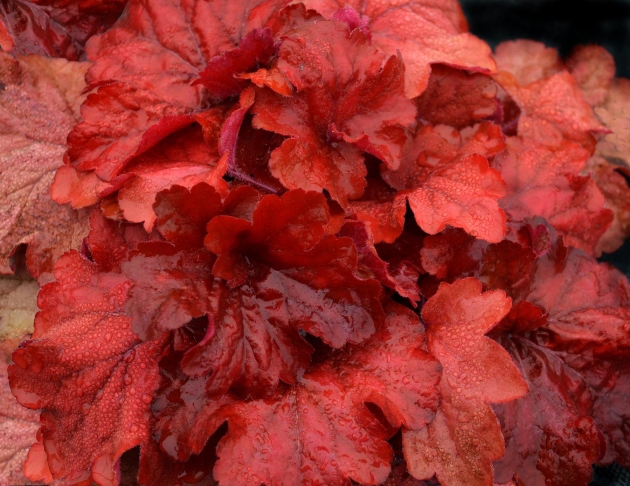
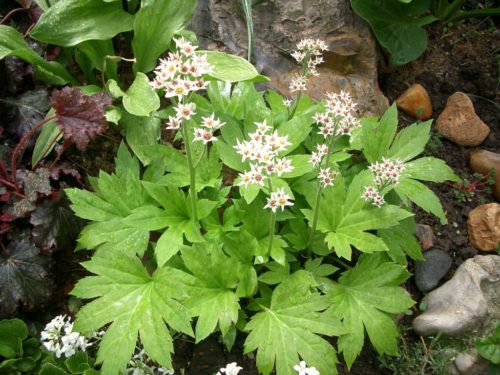
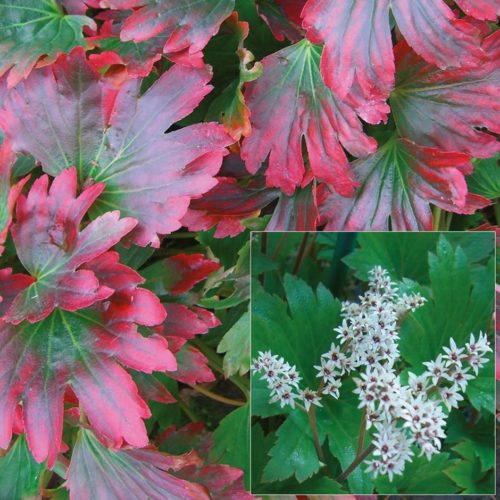
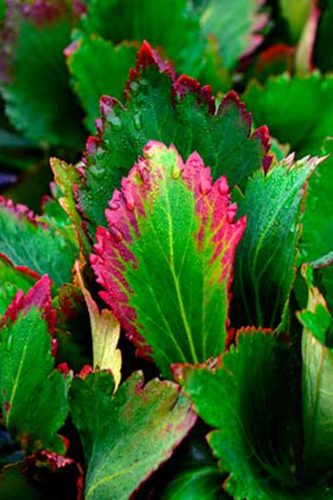
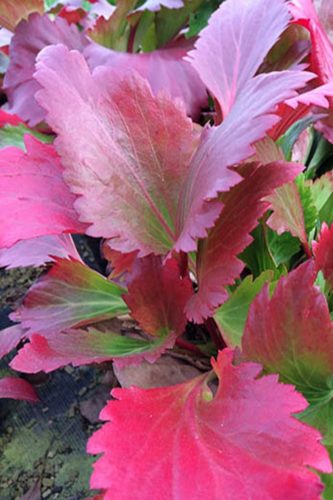
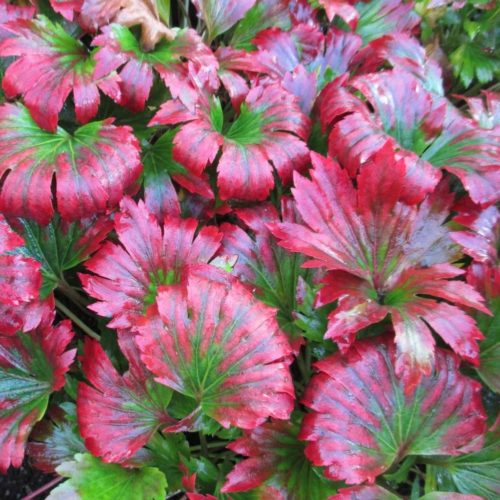
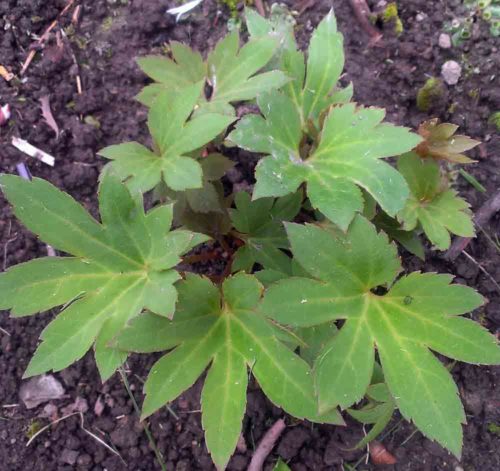
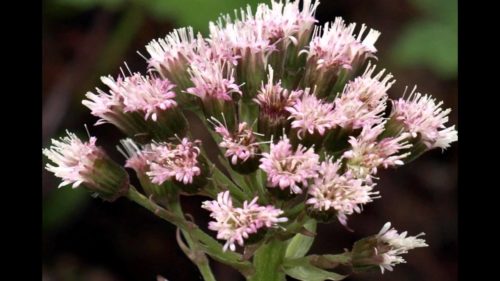












 Start a discussion ...
Start a discussion ...